-
212009. 05
No. 14 View. 5484

Korean scientists develop new production technology for nanowire, key to develop...
KAIST Professor Kim Sang-wook's team uses molecular assembly nano technology. A new chapter has opened in the production of nanowire, widely considered one of the top 10 technologies that will change the world. A team of researchers led by Prof. Kim Sang-wook at the new materials department of KAIST (President Suh Nam-pyo) said on May 11 that it had developed a new method for arranging polymers that independently form nanopatterns on a large surface, and had also used the method to develop a technique that allows for the easy and convenient production of nanowire at a specific location as required. Kim's team composed a nanostructure that is self-arranged in various forms by filling polymers that formed nanopatterns on their own in micro patterns. The researchers then demonstrated that they could create an aluminum nanowire and silicon semiconductor nanowire on a large surface by using the nanostructure as a template. Moreover, the team successfully measured the electrical characteristics of the aluminum nanowire that was created thorough this process. The result of the study was published in the May 7th online edition of Nano Letters, a world renowned scientific journal in nanotechnology. Steps are now underway for the registration of patents for related technologies. (Photo)Sectional diagram of PS-b-PMMA block polymers in a platy structure which are arranged between photo register patterns, and of aluminum nanowire and silicon nanowire that were created using the structure as a template. One of 10 technologies that will change the future. Nanowire is considered one of 10 technologies that will change the face of the future, and is the most critical factor for the development of cutting-edge electrical and electronic components, including transistors, memories, and sensors for chemical detection. However, the production of a nano-size template using conventional technology has generally been highly costly and time-consuming, creating a need for a new production technology. A researcher with the KAIST team said, "The new technology is expected to be widely used in the production of biosensors and multi-layer nanotransistors." ? ? ScienceTimesKim Chung-hanchkim at kofac.or.kr[May 21, 2009] - - - - - - -Source - ScienceTimes -
212009. 05
No. 13 View. 5453
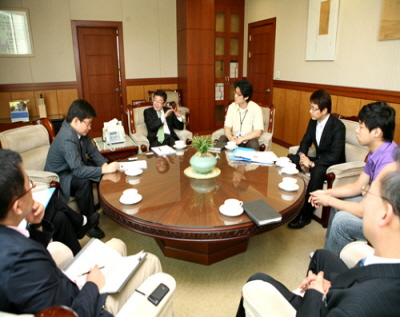
Interview with Intern Researchers of KISTI
There was an interview for a featured article on Intern Research Analysts of Joongang Daily News at KISTI head office in Daejeon on May 7th. Three intern researchers (Lee Youn-soo, Kim Bo-seong and Jo Jin-hee), as well as Dr. Park Young-seo, President, engaged in this interview and talked up the work environment, fields of the study they're working on and their plan for the future.This interview would be an opportunity for considering the working conditions and the difficulties of intern investigators and for collecting their opinions.Dr. Park Young-seo talked about major research achievement of KISTI and at the same time said that it could be great opportunities for interns to act as mediators between Industry and Research.(Photo) Dr. Park Young-seo and Intern researchers -
152009. 05
No. 12 View. 6853
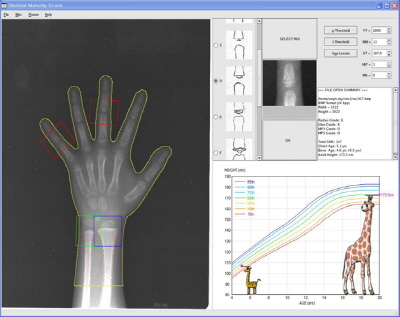
New software predicts 'how tall my child will be'
(Photo) Main page of the new software for predicting children's future growth. ETRI's technology uses X-ray images to analyze physis, forecast child's future height. Korean researchers have developed a new technology that can conveniently and easily predict a child's future height and treat poor growth in children. The Electronic and Telecommunications Research Institute (President Choi Moon-ki) said on May 12 that it had developed 'software for predicting children's growth in height," which allows users to forecast a child's future height by measuring bone maturity via an analysis of his or her physis, or growth plate. The software is also expected to help doctors and parents treat children who are growing poorly. The software is designed to predict a child's bone age and his or her projected height as a grownup by deciphering the maturity of the physis at two spots, including the radioulnar area and the phalanges, that are crucial for measuring the maturity of bones, based on the TW3 hand system, which is said to most accurately represent the maturity of a child. The "child growth prediction system" currently employed at hospitals uses ultrasonic image scanners with poor accuracy, and requires the user to detect the 13 physis one by one, and compare physis images with the standard images. The test is a time-consuming process, and may even provide inconsistent analysis results to different doctors. ETRI expects the new software will help doctors to "treat children who are growing relatively poorly," "predict a child's future height as an adult," "monitor progress in children undergoing growth treatment," and "predict the time for the emergence of second-stage sexual characteristics and conduct diagnosis of sexual pre-maturity," thus creating a new market for treating poor physical growth in children. The technology was developed as part of ETRI's institutional basic project supported by the Ministry of Knowledge Economy. The institute plans to commercialize the technology through a test service for its industrialization and technology transfer. Kim Seung-hwan, head of the u-Health research team, said, "The technology is expected to increase accuracy and reliability in predicting children's physical growth, and serve as a catalyst for activating the related market, including physical growth clinics." ? Hello DD.comJung Ji-eun,jion97 at hellodd.com ? ? ? [May 15, 2009] - - - - - - -Source - HelloDD.com -
062009. 05
No. 11 View. 5855
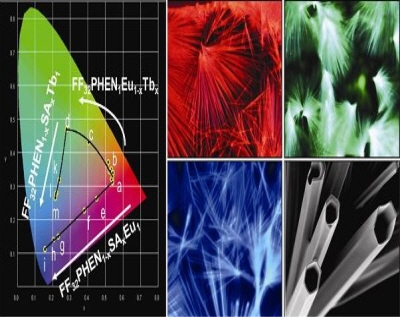
KAIST Professor Park Chan-beom develops multi-color 'bio-nanotube'
New material seen to have applications in biosensor chips, next-generation display devices. Study published in world-renowned materials journal, Advanced Materials. A research team (state-designated laboratory for new biomaterials) led by Prof. Park Chan-beom at the new materials department of the Korea Advanced Institute of Science and Technology said on April 27 that it has developed a nanotube material that can generate diverse fluorescent colors, including red, green, and blue, by using self-assembly technology existing in nature. The new material is expected to have applications as a biotechnology-based nanomaterial that can generate a wide-ranging color spectrum in various display devices. The self-assembly technology refers to a phenomenon that creates a specific structure or pattern on its own through weak non-covalent binding interaction between a material's components.The technology is one of the most widely studied techniques in the world at present. The nature of chemical materials assembling themselves like Lego blocks to create a three-dimensional structure is the fundamental basis for a wide range of biological phenomena, and the technology is highly sought after as a key technique for developing nanomaterials. Prof. Park and his team formed a nanotube structure one one-thousandth the size of a hair strand by allowing tens of thousands of very simple, two-amino acid peptides to self-assemble on their own. The team learned that in this process of self-assembly, photosensitization can be significantly magnified. Notably, the team used a protein plaque known as "amyloid," which has been linked to Alzheimer's Disease, as the peptide in its study,allowing it to successfully develop a new functional nanomaterial by applying the phenomenon of degenerative nerve diseases. The feat has drawn keen attention from the international science community. The new auto-assembly fluorescent nanomaterial is expected to have applications in the areas of biosensors, biochips, cell carriers for various drugs, medical hydrogels, and next-generation display devices, and will help Korea strengthen its science and technology competitiveness in the nano- and bio-fusion sectors. (Photo) The spectrum of fluorescent colors (left) generated by the KAIST research team and its bio-nanotube (right) The team has been conducting the internationally acclaimed study since 2008 thanks to government funding, part of the "government-designated laboratory program" operated by the Ministry of Education, Science and Technology. The study was published in the latest issue (April 27) of Advanced Material, a world-renowned material science journal. Experts say the study has made major contributions to the development of a new nanomaterial through the creative integration of nanotechnology and biotechnology. In recognition of the work's importance and applicability, Advanced Material listed the study in its "Advanced in Advanced" category, an honor awarded to the top 10 percent of the best science papers. Hello DD.comJung Yoon-hayhjeong at hellodd.com ? [May 06, 2009] - - - - - - -Source - HelloDD.com -
062009. 05
No. 10 View. 5647
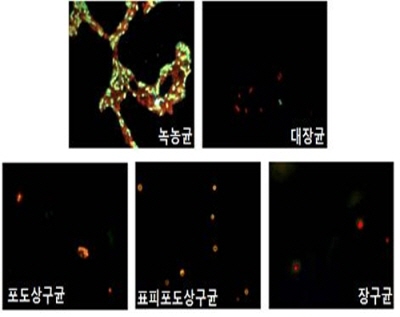
Biocompatible material developed using Pohang Accelerator
Seen to have applications as coating material for side effect-free artificial organs, medical equipment. The Pohang Accelerator Laboratory (Director Ree Moon-hor) announced on April 23 that its studies on biocompatibility using the Pohang Accelerator have allowed it to identify a "brush polymer" that simulates the structure of cell walls, and to develop a new material that can be used in the human body. The study, which was conducted by lab director Ree Moon-hor and lab researcher Dr. Kim Ga-hee, was published on April 14 in the online issue of Advanced Functional Materials, a world-renowned materials science journal. According to the Korean researchers, cell walls play a key role in the stable maintenance of cellular structure and functions by protecting materials inside the cell and by controlling the entry and exit of materials into and out of the cell. Researchers around the world have conducted extensive studies to develop a polymer material that simulates the cell wall, but had thus far failed to recreate the complete nanostructure of the cell wall. The Korean researchers created a brush structure by attaching a "long alkyl chain" on poly glycol, which maintains a regularly linear form, and introduced phospholipid at the edge, thus successfully synthesizing a brush polymer, which is similar in structure to human cell walls.They then identified the complete nanostructure of the brush polymer using a 4C2 small angle X-ray scattering beamline from the Pohang Accelerator. Initially, the researchers confirmed that protein and blood platelets, which are related with blood clotting, did not stick to the surface of the brush polymer. They also demonstrated that the material could be used as a biological material through an experiment in which they inserted the brush polymer into the subcutaneous tissue of mice. They further observed that various pathogenic germs existing in the body died upon coming into contact with the surface of the brush polymer film. As such, the material is expected to have many applications as a high-performance, highly bactericidal biomaterial that can be used to prevent secondary infections in the human body. Experts say the study comprises the first time that anyone has successfully recreated the complete nanostructure in the form of cell walls through a simple coating method. Dr. Kim Ga-hee said, "Bio-synthesis technology is presently a hot topic in global circles, and the study is expected to contribute to the development of coating materials for artificial organs and medical equipment that induce no side-effects." (Photo) Image of germs killed after sticking to the brush polymer material. ? Hello DD.comJi Na-ranara at hellodd.com ? [May 06, 2009] - - - - - - -Source - HelloDD.com -
272009. 04
No. 9 View. 5838

Poikilotherms 'control body temperature, longevity' according to changing temper...
POSTECH Professor Lee Seung-jae announces study Scientists have discovered that poikilotherms, including worms and frogs whose body temperatures change according to changing temperatures of the surrounding environment, control the pace of aging and longevity, as their nerve cells change in response to changing temperatures. Professor Lee Seung-jae at Pohang University of Science and Technology said on April 21 that his joint study with Prof. Cynthia Kenyon at University of California, San Francisco in the U.S. has found that thermo-responsive nerve cells in C. elegans, one of the poikilotherms, regulate changes in longevity in response to changing temperatures. The study was published in the latest issue of Current Biology, an affiliate publication of Cell, a world renowned scientific journal.Prof. Lee found in the study that polikilotherms die much sooner at high temperatures when thermo-responsive nerve cells are removed, and demonstrated that thermo-responsive nerve cells affect the longevity of such animals by changing the path of steroid signals.? Lee's team found that the thermal response system of C. elegans represses the aging process at around 25 degrees Celsius, and concluded that such a system is similar to homoeothermic animals' body temperature control. Prof. Lee said, "C. elegans' thermal response system tries to maintain the pace of aging even if the temperature increases," adding, "The study has shown that polikilotherms control their longevity by controlling responses to heat on their own." Prof. Kenyon, a corresponding author of the study, said, "The study is an astonishing finding, which will result in the rewriting of the chapter on polikilotherms in high school biology textbooks." Professor Lee plans to continue his study to find genes that regulate the pace of aging using C. elegans and how they operate, with a fund from the World Class University program supported by the Ministry of Education, Science and Technology. ? (photo) C. elegans' (left) used in the study and Prof. Lee Seung-jae (right) ? Hello DD .comJi Na-ranara at hellodd.com [April 27, 2009]- - - - - - -Source - HelloDD.com -
172009. 04
No. 8 View. 5229
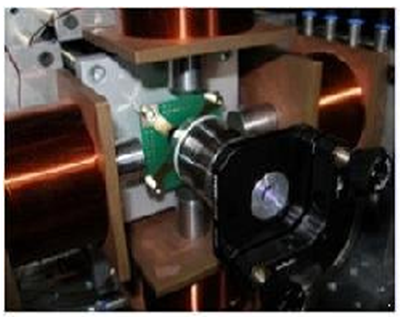
Korean scientists identify mechanism of dimensional conversion
Monitor conversion from 2-dimensional and 1-dimensional characters in nano material Korean scientists have identified dimensional conversion for the first time in the world. The Ministry of Education, Science and Technology (Minister Ahn Byung-man) said on April 9 that a team of Korean scientists actually monitored dimensional conversion (critical phenomenon), in which the characters of a square (two dimension) and a line (one dimension) co-exist, through a study of characters according to sizes of nano materials, and identified for the first that that common rules exist in such conversion. The study was conducted by teams of researchers led by Prof. Choi Seok-bong at the department of physics and astronomy of Seoul National University, and Prof. Lee Hyun-woo at the department of physics of Pohang University of Science and Technology, which are supported by the program for supporting veteran researchers (formerly state-designated laboratory program) that is funded by the MEST and the Korea Science and Engineering Foundation. The study, which scientifically demonstrated the crucial phenomenon of two physical situations (square, line) and then discovered common rules in such conversion, is a good example of the possibility for the existence of certain common rules in complicated biological and natural phenomena. Many scientists tried to identify such a phenomenon thus far, but failed in their attempts. As such, the study received high marks from the scientific journal, Nature. The British scientific journal Nature lauded the study, saying that the study presents the first experimental evidence of high credibility that clearly answers questions many scientists have failed to answer. The journal called the study a "really excellent paper," which will make unique contributions to the development and application of diverse nano materials, including nano-spintronics, which will draw keen attention in the future." The scientists monitored this conversion phenomenon through a study of characters according to the sizes of cutting-edge nano materials (less than approximately hundreds of nano meters (~100nm = 10-7m)), which are used in storage devices, including memories, in tune with dynamic development of ultra small, ultra high capacity, mobile electronic gadget technology. They were able to monitor the phenomenon using a scanning magnetic microscope, the world's only such measuring device that was designed and produced by the Korean scientists on their own. The scanning magnetic microscope was created to monitor reaction of a material to external magnetic fields, and in the study, the device played a critical role in demonstrating that when the size of nano particles become increasingly smaller (two dimension) and reaches a certain tipping point, a new character or line (one dimension) emerges, instead of that of square. The study is especially significant in that Korean scientists not only developed the device but also produced experimental agents, and conducted measurement and analysis on their own using homegrown technology. Prof. Choi said, "This suggests that Korea's research base and researchers, which have been accumulating over the past years, have reached a world class, and demonstrates that the environment has been prepared in Korea for scientists to spearhead world-class research." (Photo) Picture of internal core part of the scanning magnetic microscope. ScienceTimesKim Chung-hanchkim at kofac.or.kr [April 17, 2009] - - - - - - -Source - ScienceTimes -
162009. 04
No. 7 View. 5470
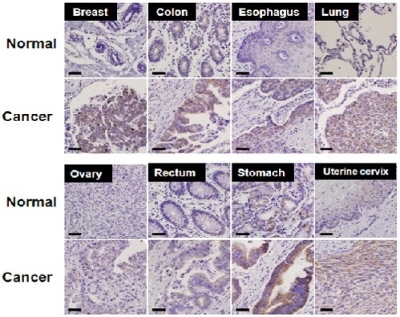
Chungnam National University proferssor identifies Cancer-triggering substance
Chungnam National University professor identifies cancer-triggering substance for first timeConfirms LETM-1 protein causes normal cells to change into cancerous cells Mechanism applied to all types of cancer.Chungnam National University said on March 30 that Park Jong-seon, professor of pharmacology at the university's medical school discovered for the first time in the world that 'LETM-01 protein' is a main substance that causes normal cells to change into cancerous cells.The finding was confirmed in types of cells, including breast cancer, colon cancer, lung cancer, ovarian cancer, gastric cancer. rectal cancer, stomach cancer, and cervical cancer.In the academic community, 'LETM-1' was believed to be the protein that triggers Wolf-Hirschhorn Syndrome, which causes retarded physical growth, mental disorder, microcrania, Greek helmet-type face, ruptures in lips or the mouth, facial defect, and heart disorder.Prof. Park's research team confirmed the destruction of normal cells by generating excessive volume of 'LETM-1.' The team found such necrosis triggers cancer by reducing the volume of mitochondria, which is an important micro-organ that plays key role in regulating energy metabolism within cells.The study was published in the March 24th online issue of "Cancer Research," the most prestigious cancer journal of the U.S. and will be announced at the American Association for Cancer Research (AACR) meeting, which will take places in Denver in April.Earlier, a preliminary basic study on biochemical mechanism of how LETM-1 functions within mitochondria was published in the January 9th online version of Cellular Signaling.Currently, the fact that damage of mitochondria is a major cause of cancer and metabolic disease is a hot issue in the biomedical community, and a string of studies have been published. Prof. Park's team discovered for the first time that LETM-1 proteins integrate with 'MRPL36,' a mitochondria protein, and thus block mitochondria from generating energy. -
092009. 04
No. 6 View. 5178
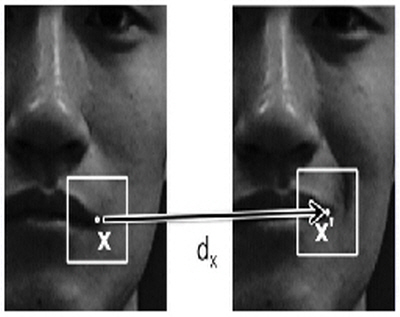
Scientists to develop 'warm machines' capable of reading people's mind
POSTECH Prof. Kim Dae-jin's team develops technology able to read four facial expressions of humans'To focus on development of human sensing technology to improve quality of elderly people's lives' It will be not long before a machine read your facial expression and mind. A team of researchers led by Prof. Kim Dae-jin at Pohang University of Science and Technology (President Baik Sung-gi) said it developed a technology that is capable of reading four different facial expressions of humans, including joy, anger, and surprise. Kim's team developed the technology that reads facial expressions through "feature points" of expressional changes. A test involving 20 people demonstrated 88 percent in accuracy of recognition of four minute facial expressions. Notably, the new technology allows the machine to automatically recognize minute facial expressions of humans, as it adopts "motion magnification" technology, unlike the conventional technology that is capable of only recognizing extreme facial expressions. Hence, the new technology is drawing keen attention. Prof. Kim's team plans to use the technology in improving the quality of life for the elderly and the disabled. By analyzing moves and behaviors of elderly shut-ins and the handicapped and understanding their intent, the team plans to develop advanced technology than can be applied to robots, among other devices. To this end, Prof. Kim's team is conducting the research jointly with a research team led by Prof. Takeo Kanade, a world authority in robotics vision at the Robotics Institute in Carnegie Mellon University in the United Sates, with financial support from the World Class University (WCU) program of Korea's Ministry of Education, Science and Technology. The technology for facial scanning and recognition and facial expression recognition developed by Prof. Kim's team has been transferred to Samsung Electronics. The technology will be adopted to Samsung's mobile handsets, including Omnia and Haptic phones, and digital cameras. Meanwhile, the British public scientific magazine, New Scientist, recently introduced Prof. Kim's research in an article, saying that it will not be long before a machine will read facial expressions of humans, how ever minute expressions are. ? Hello DD.comKim Yosepjoesmy at hellodd.com [April 09, 2009]- - - - - - -Source - HelloDD.com -
062009. 04
No. 5 View. 5615
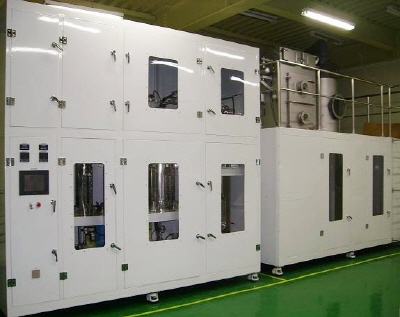
Technology developed for speedy production of dream insulation material
Technology developed for speedy production of 'dream insulation material, Aerogel,' 26 times faster than conventional methods. Korea institute of Energy Technology constructs facility for low-cost commercialization, capable of mass production. Product costs half price of foreign products, saves energy by over 30 %. Korean researches have developed a process technology for Aerogel, which is known as a "Dream Insulation Material," as it was used as insulator for Sojourner, the Mars expedition robot, in 1997. The Korea Institute of Energy Technology (President Han Moon-hee) said on April 2 that it has developed "process technology for the commercial production of silica Aerogel powder," a material that was not been adequately commercialized due to a complicated production process and high costs. The new technology allows for mass production of the material by reducing the production process time from 168 hours to only six hours. Korea has been developing the technology for years, but has had difficulties penetrating the market because it failed to secure core technology held by advanced countries. However, the development of the new technology has led to the establishment of production facilities for the first time in Korea, which can churn out up to 50,000 tons of prototype product of silica Aerogel powder per year. Conventional facilities for commercial production of the material use supercritical CO2 drying process, which requires high pressure equipment in addition to very costly material (Alokoxide: 96800 won/kg), but in the newly developed process, water glass, a general industrial material, is directly put in, and a new technology is used, which processes surface reforming and the reaction for transformation into gel simultaneously, and which allows for the adoption of a Fluidized Bed-drying process that is capable of drying the material successively, which in turn drastically reduces the production process and process time. Notably, the technology involves a low carbon 'green production' process compared with conventional methods that use carbon dioxide for supercritical drying. Compared with the conventional supercritical carbon dioxide-dependent drying process, the normal atmospheric drying process technology can save 25,900 toe/year during energy processing; and 200 toe/year in sewage treatment, and thus save a combined annual total of 26,100 toe (7.8 billion won). As such, the new technology is expected to drastically reduce energy use and costs for environmental processing. In particular, silica Aerogel powder that is produced using the newly commercialized technology boasts quality and performance on par with foreign products currently available in the market in terms of physical property. It also is expected to cost less than half the price of foreign products, which are sold for 130,000 won per ton. More than anything, the achievement is significant because Korean scientists have developed outstanding core technology that overcomes technology held by foreign companies. The Korean researcher submitted application for six patents for the technology. Ahn Young-soo, the head of the research team, said, "Since we now can mass produce costly silica Aerogel powder, which Korea relied solely on foreign imports thus far, at less than half the import price, the material industry will likely be activated. Cost saving resulting from the new technology will reach more than 30 percent in the areas of construction and industries. Since, Aerogel boasts extremely high isolation capacity, is harmless and inflammable, and generates no toxic gas in the event of fire, the boundary of application of the Aerogel insulation material will likely further expand." Hello DD.com,Lim Eun-hee,redant645 at hellodd.com[April 06, 2009]- - - - - - -Source - HelloDD.com

 Delete Article!
Delete Article!